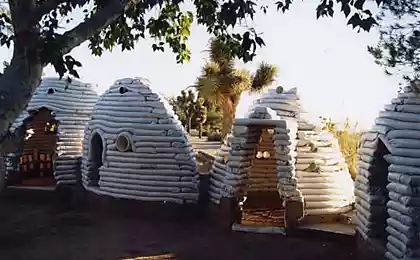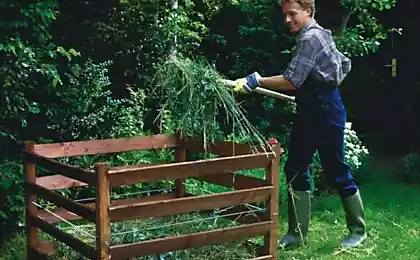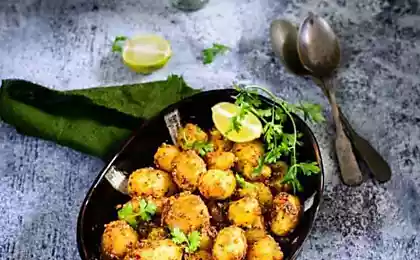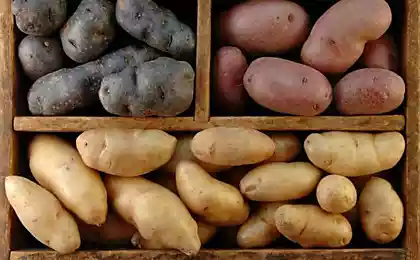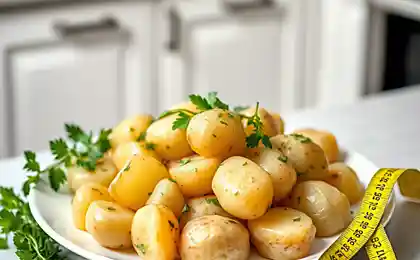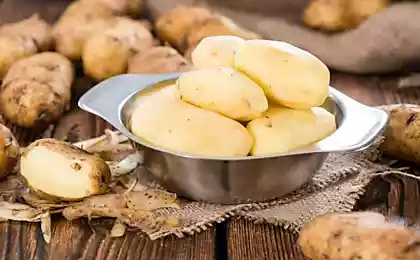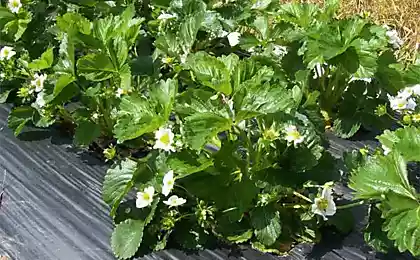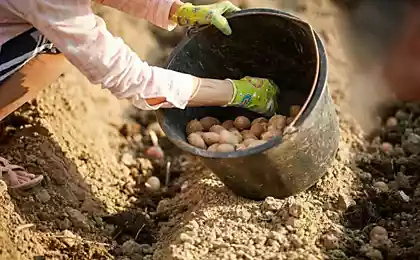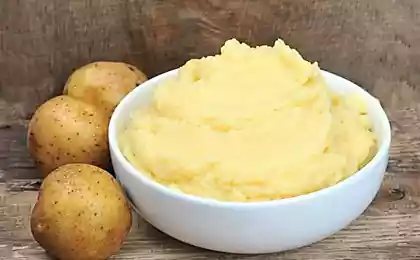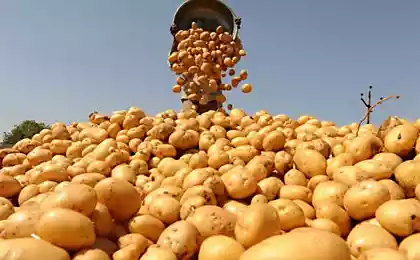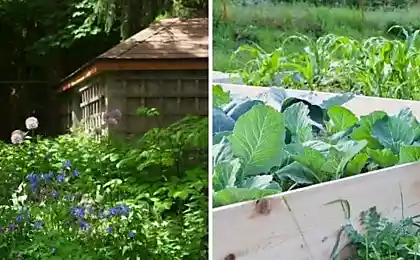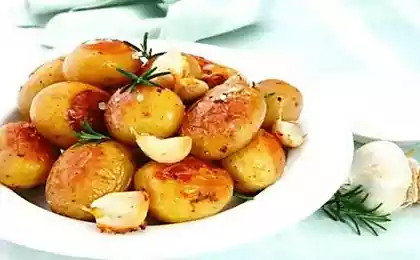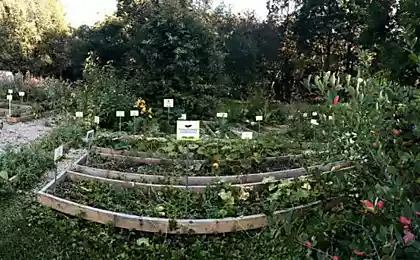168
You'll carry potato bags endlessly in the fall if you listen to an old agronomist
A generous harvest of potatoes, large, tasty, without chemistry - this is the cherished dream of any gardener. In addition to the hated bugs and unpredictable weather, we are often hampered by our own mistakes. We will talk about the most common ones in this article.

Potatoes, of course, will grow from any planting material. But it is difficult to count on a good result with this approach. The tubers that remain for sowing, year after year accumulate pathogens of fungal diseases and pests.

Sooner or later it will affect the harvest. Therefore, the seed fund should be updated at least once every 5 years. In addition, the residual approach should be reconsidered. Usually the best tubers are selected for food. And on the seeds leave little things and bad quality.
According to agronomists, this leads to the degeneration of the variety. For sowing, they advise taking healthy potatoes no smaller than chicken eggs. But the other extreme does not produce results. Too large potatoes will not take root for a long time, using up internal reserves.
Do not plant potatoes that have just been taken from the cellar. In this case, it will germinate for a very long time.

Tubers need to be prepared for planting, start the process of formation of sprouts in them. To do this, potatoes are laid out in a room with a temperature of 12-15 degrees and diffuse lighting for 15-20 days.
The limited area available forces us to grow potatoes on the same site year after year. Meanwhile, so that pests and diseases do not accumulate in the soil, the planting site must be changed every few years.
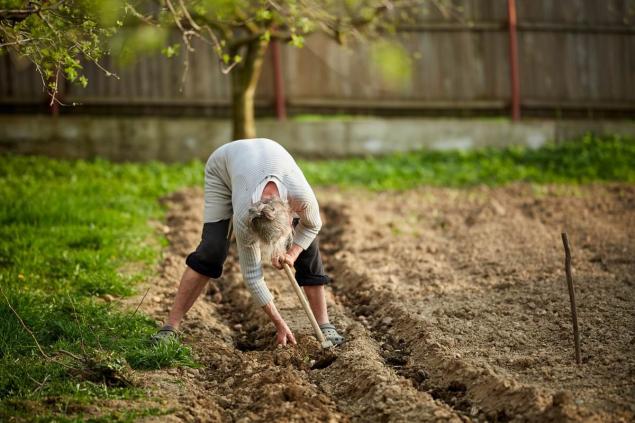
The best predecessors for potatoes are onions, garlic, cucumbers, radishes, cabbage, legumes. Tomatoes, for example, don't fit. Both cultures belong to the nightshade family, which means they are prone to the same diseases.
Can you get more by planting less?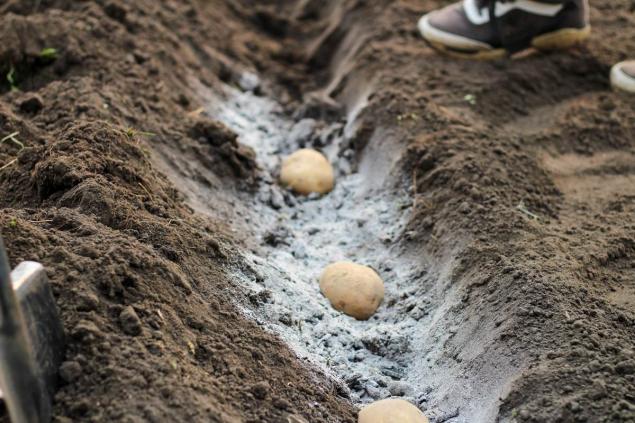
So that the tubers of potatoes do not have to compete with each other for water and nutrients, the distance between the holes should be at least 25-35 centimeters. And the distance between the rows is 60-70 centimeters.
Tubers begin to form during the flowering of potatoes. Therefore, when at this time there is no rain for 2 weeks or more, plants are especially acutely affected by a lack of moisture.
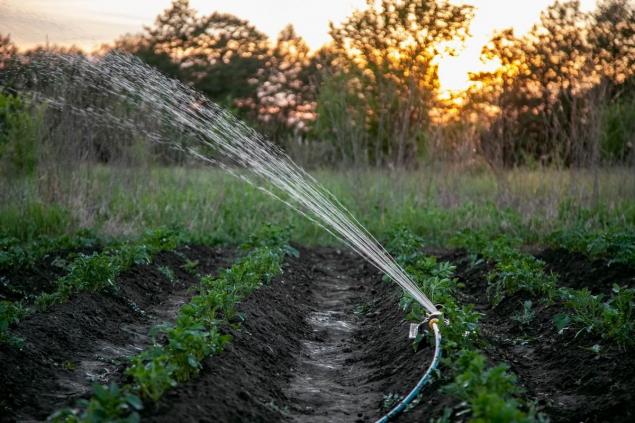
The start of flowering comes out - a signal for the gardener: it's time to water. For a good harvest during flowering, potatoes should be watered at least 2 times a week.
Feeding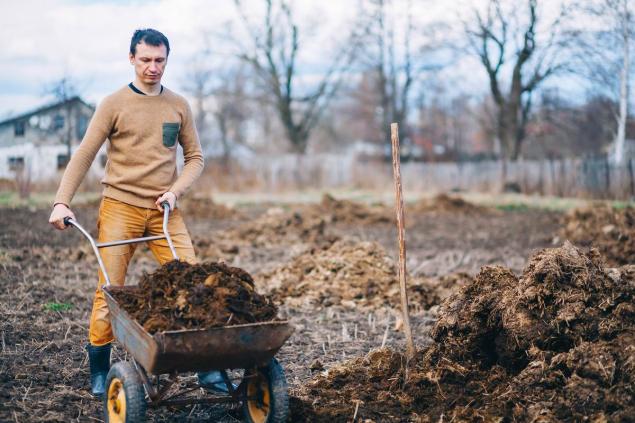
For a good harvest of potatoes, you need to fertilizer the site in advance, from autumn. After harvesting and plowing the land, it is necessary to distribute over the excavated soil crushed cow manure or compost. It will need a lot: 7 buckets per 1 square meter.
It is not recommended to use fresh manure. Not only does it worsen the taste of tubers, but it also causes infection with scab, reducing the yield. In the spring, complex fertilizer (nitrogen, phosphorus and potassium) is introduced at the rate of 2-3 kg for each hundredth of the garden. Potatoes respond well to the introduction of wood ash. 300 grams per square meter will be enough.

Potatoes, of course, will grow from any planting material. But it is difficult to count on a good result with this approach. The tubers that remain for sowing, year after year accumulate pathogens of fungal diseases and pests.

Sooner or later it will affect the harvest. Therefore, the seed fund should be updated at least once every 5 years. In addition, the residual approach should be reconsidered. Usually the best tubers are selected for food. And on the seeds leave little things and bad quality.
According to agronomists, this leads to the degeneration of the variety. For sowing, they advise taking healthy potatoes no smaller than chicken eggs. But the other extreme does not produce results. Too large potatoes will not take root for a long time, using up internal reserves.
Do not plant potatoes that have just been taken from the cellar. In this case, it will germinate for a very long time.

Tubers need to be prepared for planting, start the process of formation of sprouts in them. To do this, potatoes are laid out in a room with a temperature of 12-15 degrees and diffuse lighting for 15-20 days.
The limited area available forces us to grow potatoes on the same site year after year. Meanwhile, so that pests and diseases do not accumulate in the soil, the planting site must be changed every few years.

The best predecessors for potatoes are onions, garlic, cucumbers, radishes, cabbage, legumes. Tomatoes, for example, don't fit. Both cultures belong to the nightshade family, which means they are prone to the same diseases.
Can you get more by planting less?

So that the tubers of potatoes do not have to compete with each other for water and nutrients, the distance between the holes should be at least 25-35 centimeters. And the distance between the rows is 60-70 centimeters.
Tubers begin to form during the flowering of potatoes. Therefore, when at this time there is no rain for 2 weeks or more, plants are especially acutely affected by a lack of moisture.

The start of flowering comes out - a signal for the gardener: it's time to water. For a good harvest during flowering, potatoes should be watered at least 2 times a week.
Feeding

For a good harvest of potatoes, you need to fertilizer the site in advance, from autumn. After harvesting and plowing the land, it is necessary to distribute over the excavated soil crushed cow manure or compost. It will need a lot: 7 buckets per 1 square meter.
It is not recommended to use fresh manure. Not only does it worsen the taste of tubers, but it also causes infection with scab, reducing the yield. In the spring, complex fertilizer (nitrogen, phosphorus and potassium) is introduced at the rate of 2-3 kg for each hundredth of the garden. Potatoes respond well to the introduction of wood ash. 300 grams per square meter will be enough.
She waved to Italy and was taken aback by the way the hot Italians behaved.
Perennials that will slowly bloom from June to August, delighting the hostess


